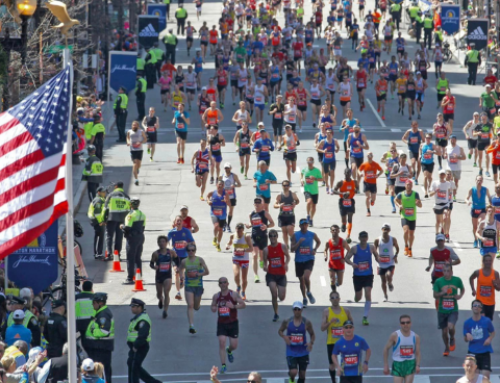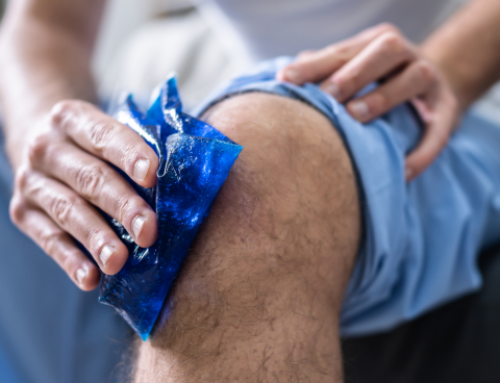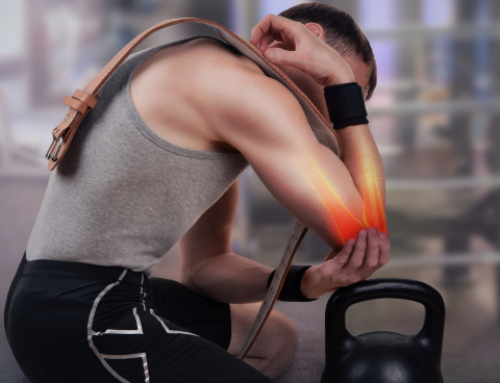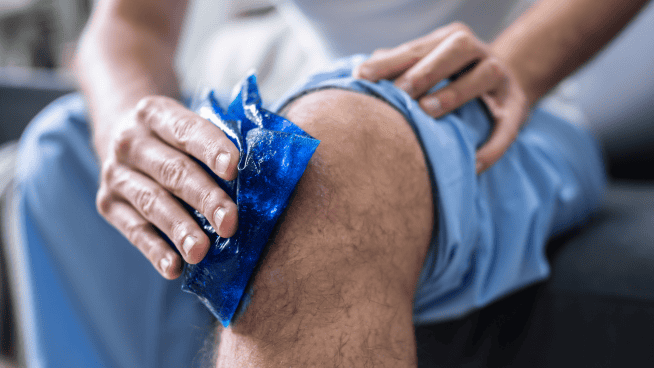How to Train With Shin Splints
Shin splints are one of the most common injuries among runners. They are characterized by pain and inflammation along the inside of the tibia bone, which can be aggravated by repetitive exercise. They can be caused by multiple factors, including increasing mileage too quickly, overuse, improper knee or hip posture and structural problems in the foot.
Shin splints can be a nuisance, but there are steps you can take to work through them and continue with your season. Here are some techniques to incorporate into your daily routine.
RELATED: How to Treat Shin Splints
R.I.C.E
- Rest: Allow your body to recover by taking a rest day between long runs. Perform cross-training exercises such as cycling, swimming or resistance training. You will retain your conditioning while giving your shin muscles time to repair.
- Ice: After your run, ice your shins with ice bags, ice packs, ice cups or a cold whirlpool. Icing after you run decreases blood flow and inflammation, therefore decreasing pain.
- Compression: Wear compression socks or sleeves during your runs. Shin splints happen when the muscles fatigue and detach from the tibial bone. Wearing compression socks or sleeves will keep your anterior tibialis muscles tight to your bone.
- Elevation: Elevating your legs after a run allows the blood to flow away from your legs, decreasing inflammation and relieving pressure. It also decreases the lactic acid build-up that occurs while running.
RELATED: Should Pitchers Ice After Throwing?
Flexibility/Foam Rolling
Stretching after your run prevents your muscles from becoming tight and stiff, reduces the chance of injury and allows for greater range of motion. Foam-rolling your calf muscles before and after your run loosens up yours muscles and breaks up any muscle adhesions.
- Prone Calf Stretch – 3×30 seconds
- Slant Board – 3×30 seconds
- Standing Single-Leg Quad Stretch (emphasizing ankle plantarflexion) – 3×30 seconds
- Seated Resistance Band Calf Stretch – 3×30 seconds
- Foam roll calves (single leg or both) – 3×10
Strengthening Exercises
Strengthening your calf and shin muscles will help them resist fatigue and prevent them from detaching from the tibial bone. Strong muscles also allow you to keep good running form even when you’re tired.
- Calf/Shin Raises – 3×30
- Heel/Toe Walks – 2×20 yards
- Seated Theraband Dorsiflexion/Plantarflexion – 3×10
- Seated Theraband External/Internal Rotation – 3×10
- Toe Pick-Ups – 1×15 each leg
- Towel Scrunches – 3×15
- Ankle ABC’s – 1×26 each foot
External Factors
Shin splints can also be caused by external factors such as rough running surface, improper footwear and poor training regimen.
- Run on soft, even surfaces such as dirt paths, grass or the track.
- Wear proper footwear suited to your needs (minimal, neutral, stability).
- Do not increase your mileage more than 10 percent a week.
- Run a long recovery or progressive run between short, high-intensity runs.
RECOMMENDED FOR YOU
MOST POPULAR
How to Train With Shin Splints
Shin splints are one of the most common injuries among runners. They are characterized by pain and inflammation along the inside of the tibia bone, which can be aggravated by repetitive exercise. They can be caused by multiple factors, including increasing mileage too quickly, overuse, improper knee or hip posture and structural problems in the foot.
Shin splints can be a nuisance, but there are steps you can take to work through them and continue with your season. Here are some techniques to incorporate into your daily routine.
RELATED: How to Treat Shin Splints
R.I.C.E
- Rest: Allow your body to recover by taking a rest day between long runs. Perform cross-training exercises such as cycling, swimming or resistance training. You will retain your conditioning while giving your shin muscles time to repair.
- Ice: After your run, ice your shins with ice bags, ice packs, ice cups or a cold whirlpool. Icing after you run decreases blood flow and inflammation, therefore decreasing pain.
- Compression: Wear compression socks or sleeves during your runs. Shin splints happen when the muscles fatigue and detach from the tibial bone. Wearing compression socks or sleeves will keep your anterior tibialis muscles tight to your bone.
- Elevation: Elevating your legs after a run allows the blood to flow away from your legs, decreasing inflammation and relieving pressure. It also decreases the lactic acid build-up that occurs while running.
RELATED: Should Pitchers Ice After Throwing?
Flexibility/Foam Rolling
Stretching after your run prevents your muscles from becoming tight and stiff, reduces the chance of injury and allows for greater range of motion. Foam-rolling your calf muscles before and after your run loosens up yours muscles and breaks up any muscle adhesions.
- Prone Calf Stretch – 3×30 seconds
- Slant Board – 3×30 seconds
- Standing Single-Leg Quad Stretch (emphasizing ankle plantarflexion) – 3×30 seconds
- Seated Resistance Band Calf Stretch – 3×30 seconds
- Foam roll calves (single leg or both) – 3×10
Strengthening Exercises
Strengthening your calf and shin muscles will help them resist fatigue and prevent them from detaching from the tibial bone. Strong muscles also allow you to keep good running form even when you’re tired.
- Calf/Shin Raises – 3×30
- Heel/Toe Walks – 2×20 yards
- Seated Theraband Dorsiflexion/Plantarflexion – 3×10
- Seated Theraband External/Internal Rotation – 3×10
- Toe Pick-Ups – 1×15 each leg
- Towel Scrunches – 3×15
- Ankle ABC’s – 1×26 each foot
External Factors
Shin splints can also be caused by external factors such as rough running surface, improper footwear and poor training regimen.
- Run on soft, even surfaces such as dirt paths, grass or the track.
- Wear proper footwear suited to your needs (minimal, neutral, stability).
- Do not increase your mileage more than 10 percent a week.
- Run a long recovery or progressive run between short, high-intensity runs.










